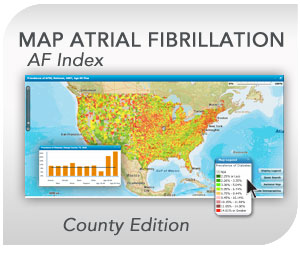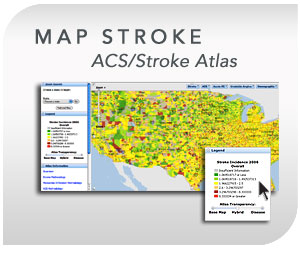Stroke Reports
Friday, December 7th, 2012

AHA: 12/4/12 Background and Purpose—In Western Europe, mortality from ischemic stroke (IS) has declined over several decades. Age–sex-specific IS mortality, IS incidence, 30-day case fatality, and 1-year mortality after hospital admission are essential for explaining recent trends in IS mortality in the new millennium. Methods—Data for all IS deaths (1980–2010) in the Netherlands were grouped […]
Stroke Reports
Friday, December 7th, 2012

Background—A hub-and-spoke telestroke network is an effective way to extend quality acute stroke care to remote hospitals and to improve patient outcomes. This study assessed the cost-effectiveness of a telestroke network in the management of acute ischemic stroke from the perspectives of a network, a hub hospital, and a spoke hospital. Methods and Results—A model […]
Stroke Reports
Friday, December 7th, 2012

The Lancet: 12/1/12 Background Transient isolated brainstem symptoms (eg, isolated vertigo, dysarthria, diplopia) are not consistently classified as transient ischaemic attacks (TIAs) and data for prognosis are limited. If some of these transient neurological attacks (TNAs) are due to vertebrobasilar ischaemia, then they should be common during the days and weeks preceding posterior circulation strokes. […]
Stroke Reports
Friday, December 7th, 2012

PLOS: 11/30/12 Although a relationship between depression and cardiovascular events has been suggested, past study results regarding the risk of stroke in relation to depression by subgroups are ambiguous. The aim of this study was to investigate the influence of depressive symptoms on risk of incident ischemic stroke in elderly according to age and sex. […]
Stroke Reports
Friday, December 7th, 2012

Neurology.org: 11/28/12 Objective: We hypothesized that cryptogenic forms of arterial ischemic stroke (AIS) in children may present better outcomes than symptomatic ones. Methods: We conducted a single-centered retrospective cohort study using chart reviews of all inpatients aged 0.25–16 years and admitted for AIS or TIA between 1994 and 2007. Sixty-three consecutive children with AIS were […]
Stroke Reports
Sunday, December 2nd, 2012

AHA: 11/27/12 Background and Purpose—Early reperfusion is the most effective therapy for both acute brain and cardiac ischemia. However, the cervicocephalic circulatory bed offers more challenges to recanalization interventions. The historical development of reperfusion interventions has not previously been systematically compared. Methods—Medline search identified all multi-arm, controlled trials of coronary revascularization for acute myocardial infarction and […]
Stroke Reports
Sunday, December 2nd, 2012

AHA: 11/20/12 Background and Purpose—Atrial fibrillation (AF) increases the risk of stroke and is associated with poor stroke outcomes. Limited tools are available to evaluate clinical outcomes and response to thrombolysis in stroke patients with AF. Methods—We applied the iScore (http://www.sorcan.ca/iscore), a validated risk score, to consecutive patients with an acute ischemic stroke admitted to […]
Stroke Reports
Sunday, December 2nd, 2012

AHA: 11/8/12 Background and Purpose—Earlier tissue-type plasminogen activator (tPA) treatment for acute ischemic stroke increases efficacy, prompting national efforts to reduce door-to-needle times. We used lean process improvement methodology to develop a streamlined intravenous tPA protocol. Methods—In early 2011, a multidisciplinary team analyzed the steps required to treat patients with acute ischemic stroke with intravenous […]
Stroke Reports
Sunday, December 2nd, 2012

AHA: 10/4/12 Background and Purpose—The contribution of genetics to stroke risk, and whether this differs for different stroke subtypes, remainsuncertain. Genomewide complex trait analysis allows heritability to be assessed from genomewide association study (GWAS) data. Previous candidate gene studies have identified many associations with stoke but whether these are important requires replication in large independent data […]
Stroke Reports
Sunday, December 2nd, 2012

AHA: 10/2/12 Background and Purpose—We aimed to analyze the association between patient socioeconomic status and functional impairment 3 months after ischemic stroke and to identify factors that influence this association. Methods—Data were obtained from the Berlin Stroke Register, a network of 14 stroke units in Berlin. Ischemic stroke patients consecutively admitted to 1 of the hospitals […]



































